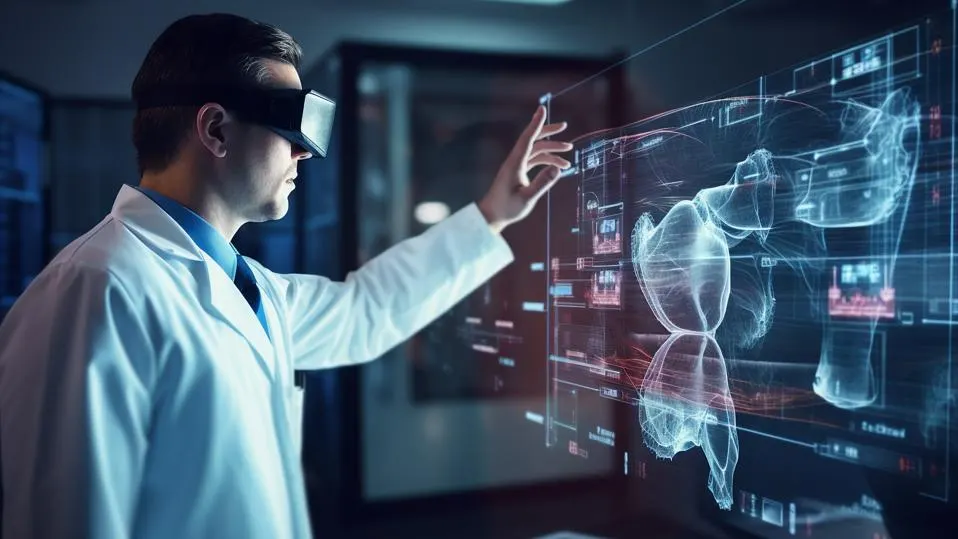Revolutionizing The Auto Industry: Embracing The Circular Economy For A Sustainable Future
4 July 2023
The automotive industry’s seismic shift away from internal combustion and towards electric vehicles (EVs) is creating opportunities for it to reinvent itself from the ground up. Traditional paradigms of design, manufacture, product lifecycle management, and partnership-building are all being reimagined with a focus on efficiency and sustainability.

This new auto industry is built around the concept of a "circular economy." Rather than the linear economies of today – where products are built, used, and then disposed of - the new business model involves ensuring as many components as possible can be reclaimed and recycled. This extends to developing new relationships between car makers, technology partners, and end customers.
In this article, I will take a look at some of the ways that this is being achieved, as well as some of the factors that are driving the urgent need for change.
What is a circular economy?
In this new economic model, keeping resources in use for as long as possible becomes a central element of the business model. While it’s likely to involve major infrastructure investments up-front, the idea is that technology can be used to create efficiencies that will reduce operating costs over time. Creating all of the components for every newly produced vehicle from scratch is expensive enough. But factoring in the increased regulatory and taxation burdens on businesses that create emissions and landfill waste in many jurisdictions, as well as implications of the Paris Climate Agreement, it increasingly makes economic sense to re-use and recycle wherever possible. So, it isn’t just about saving the world - the World Economic Forum says that adopting the circular economy approach will enable automotive manufacturers to “significantly improve profitability."
Manufacturers of electric vehicles, in particular, are being targeted with legislation aiming to tackle issues around environmental damage related to the production and disposal of batteries. The EU has laid out plans to move towards circular economies by 2050 in many industries, and automotive is widely seen as an ideal test case to lead the way. The current EU directive states that 85% of EV components should be reusable and recyclable. Japan, South Korea, India, and several US state governments have also introduced legislation around the requirements of end-of-life recycling of EV components.
Swedish battery manufacturer Northvolt AB has a mission to “build the world’s greenest battery”. Mikael Söderberg, Chief Digital Officer, at Northvolt tells me, “We have a commitment to 100% renewable energy throughout our operations, which span the battery life cycle starting from raw materials, through battery cells and packs, to recycling. The output of our battery recycling feeds into our active material manufacturing, co-located on the same site, effectively closing the loop on circular manufacturing.”
How is the circular economy being achieved?
Manufacturing is being reimagined, with a renewed focus on reducing waste and improving reusability. Parts can be created on-demand thanks to new procedures such as 3D printing, cutting down on over-production as well as emissions created by moving components between manufacturing, assembly, and maintenance facilities.
In 2020, Renault Group began work on developing what has been described as the first circular economy vehicle factory in the world, near Paris, France, scheduled for opening in 2024. The project has four priorities – increasing the lifespan of vehicles, developing more energy-efficient and recyclable batteries, optimizing the ability to dismantle end-of-life vehicles and re-use parts, and accelerating education, research, and development around the circular economy model.
Stellantis, the conglomerate behind brands including Citroen, Alfa Romeo, Peugeot, and Vauxhall, has created a Circular Economy Hub that it plans to use to generate 2 billion euros in revenue per year. In 2022 it unveiled a concept vehicle, the Citroen Oli, made from 100 percent recycled components designed to demonstrate its drive towards circular business initiatives.
More intelligent partnerships centered around sustainability and reducing emissions are also a critical part of the solution. Although EVs operate at zero emissions rates, when you account for “embedded emissions” created during the vehicle’s development and manufacture, this can often offset this gain.
Danish aluminum producer Hyrdo has developed a method of re-using and recycling the aluminum used in car construction, with the aim of reducing the emissions in EV manufacture to close to zero. It is now working to develop partnerships with auto manufacturers that will play an important part in bringing down their overall carbon footprint of production.
Customer demand is also clearly a big factor in the move towards a circular economy. In a recent keynote interview for the Financial Times Future of The Car symposium, Bentley CEO Adrian Hallmark said that this, along with legislative pressure and the emergence of enabling technologies, are the driving forces behind Bentley’s ambition to sell only EVs by 2030. Since 2017 the number of customers saying they are interested in buying an electric Bentley in the next five years has increased from 14 percent to over 60 percent.
The role of digital technology in the automotive circular economy
By harnessing the power of cloud-connected data infrastructure, vehicle performance, and customer behavior can be monitored long after the new owner drives away from the showroom. Using this data together with machine learning and advanced analytics, vehicles, and components can be kept in use for longer, emissions can be reduced, and the volume of waste going into landfill at the end of a product's life cycle can be minimized.
Information infrastructure in the automotive industry is centered around the way data is used to design, build, market, sell, service, and re-use vehicles. New and emerging trends, including artificial intelligence (AI) and cloud computing, have a pivotal role in breaking down barriers to information sharing and enabling the development of more efficient digital processes.
I recently spoke to Wendy Bauer, general manager for automotive and manufacturing at AWS, about the role of cloud computing in this paradigm shift towards a circular auto economy.
She told me that automotive is becoming the first industry to fully redefine itself along the principle of making products that last longer, putting materials to use for longer, and putting reclaiming and recycling at the core of its business model.
She said, "How they do what they do, who sells to who, how things get designed, where the value comes from – all that is being redesigned.
"And there is so much data across each of those points that when you bring that data together in new ways, you get the different insights that are required to solve different challenges, or get the perspective to know what decisions to make … where to place things when it's time to recycle a battery or a vehicle."
With connected cloud systems in place, manufacturers can be more productive and efficient as they capture data on machine operations directly from the plant floor. By connecting the design, manufacturing, sales, customer experience, maintenance, and eventual end-of-lifecycle processes through the cloud, manufacturers get a better understanding of the support and resources that need to be in place throughout the usable life of a vehicle.
Söderberg tells me, “We have defined and deployed technologies for detailed process data collection and traceability across the entire value chain, which opens the door to data sharing, enabling sophisticated simulations and rich data modes. The depth of our digitalization enables global optimization across the entire life cycle — aiding the development of better and more efficient batteries while also reusing input materials as much as possible. We are building the digital foundation for a 360 view of our batteries, from raw materials through R&D, manufacturing, validation, operating life, to recycling. Integrating data from every stage of the battery lifecycle gives a unique opportunity to optimize globally for both accelerated product development and world-class environmental performance.”
Cloud computing has also enabled the emergence of the “software-defined vehicle” (SDV) concept. This is a car or other vehicle which is effectively a digital platform in its own right and, therefore, can be upgraded and improved, like any software, thanks to over-the-air updates as they are developed over its lifetime. These could be updates that improve the battery life or alter the performance of the vehicle in order to reduce wear and tear on internal components or bodywork. This has the effect of further increasing vehicle lifespans and enhancing the reusability of components.
The road ahead
If it is to hit its tight deadlines around emissions and electrification, the circular economy model is clearly key to the future direction of the automotive industry. However, it is not without its challenges. Automotive manufacturers, as well as partners such as the technology providers and component and materials producers covered here, will need to invest upfront in the infrastructure that will be required to make re-use and recycling on this scale a reality.
However, the potential benefits that are there for the taking make it an opportunity that the industry can’t afford to ignore. The ability of players within this ecosystem to collaborate and forge key partnerships will be make-or-break in order to ensure that resources and skills are in place along the value chain. Vehicle manufacturers, technology providers, materials suppliers, and government agencies all have a part to play if the vision of the circular automotive economy is to become a reality. But it's clear that momentum is building, and there is a will to make it happen, and many of the key players are strapped in and ready to embark on the journey toward a greener and more sustainable future.
Related Articles
11 Most Reliable AI Content Detectors: Your Guide To Spotting Synthetic Media
Since the launch of ChatGPT just two years ago, the volume of synthetic – or fake – content online has increased exponentially.[...]
The AI-Powered Citizen Revolution: How Every Employee Is Becoming A Technology Creator
Something remarkable is happening in organizations around the world.[...]
6 Mistakes IT Teams Are Guaranteed To Make In 2025
The next wave of artificial intelligence isn't just knocking at enterprise doors - it's exposing fundamental flaws in how organizations approach technology transformation.[...]
2025’s Tech Forecast: The Consumer Innovations That Will Matter Most
Consumer technology covers all of the tech we buy to make our lives more convenient, productive or fun.[...]
7 Healthcare Trends That Will Transform Medicine In 2025
Healthcare has evolved dramatically in recent years, with technology driving countless new opportunities, just as demographic and societal factors have created new challenges.[...]
Sign up to Stay in Touch!
Bernard Marr is a world-renowned futurist, influencer and thought leader in the fields of business and technology, with a passion for using technology for the good of humanity.
He is a best-selling author of over 20 books, writes a regular column for Forbes and advises and coaches many of the world’s best-known organisations.
He has a combined following of 4 million people across his social media channels and newsletters and was ranked by LinkedIn as one of the top 5 business influencers in the world.
Bernard’s latest book is ‘Generative AI in Practice’.










Social Media